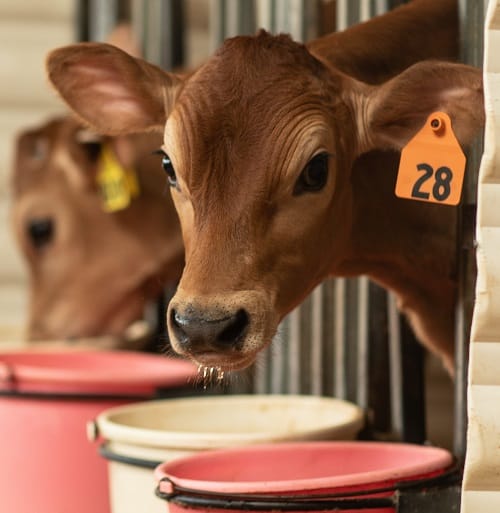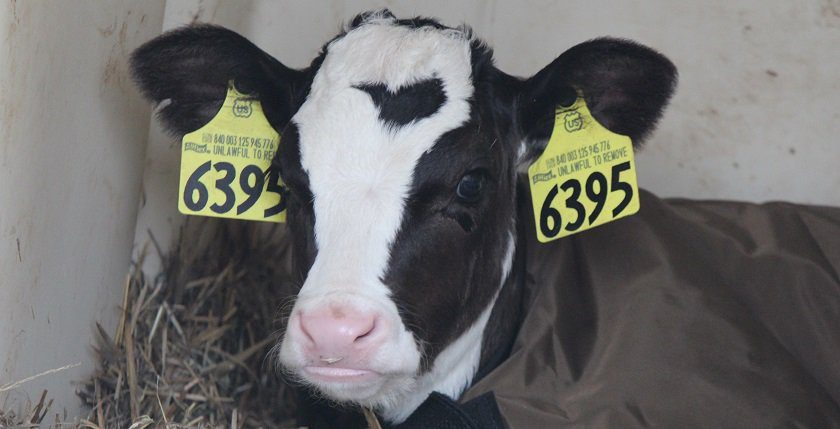As we face the biting cold of winter, it is a good time to remind ourselves how best to fight back against the cold and protect our calves. Calves experience cold stress when the ambient temperature drops below their thermoneutral zone, generally between 55⁰F – 70⁰F. For each 1⁰F drop below the thermoneutral zone, a calf’s maintenance requirement increases by 1%.
Here are 7 keys to easing the effects of cold stress on your calves
1
Dry calving area. Calves are born with 2% of their bodyweight as brown fat. Brown fat is a potent energy source that can provide 40% of the calf’s ability to thermoregulate in cold and wet environments. Calves should be born in a clean and dry calving area and they should be dried off as soon as possible after birth so this store of fat is not burned up within hours.
2
Whole colostrum. Whole colostrum contains colostral fat which is nature’s key to unlocking brown fat synthesis. When it’s cold outside, colostral fat will jump-start the brown fat in the calf to start providing heat. Beyond the impact of colostral fat, it is imperative to provide the calf with at least 150g IgG within a couple hours of birth to provide it with passive immunity. If needed, a 100% whole bovine dried colostrum replacer, such as Foundation™ 150 natural bovine colostrum should be used.
3
Calf Coats. In cold weather, calf coats can help provide calves with an essential extra layer of insulation. Calves should be thoroughly dried off before you put a clean calf coat on them. Several calf coat options exist, including LIFEJACKET™ calf coats
4
Bedding. No matter the time of year, the bedding for your calves should be kept dry and clean, but this is especially important in cold weather. There should be adequate bedding to cover a calf’s feet and legs when it is lying down.
5
Nutrition. Calves should be fed a higher level of calories in cold weather to provide the extra calories needed to help them maintain their body temperature and growth needs. You can achieve this by either increasing the fat content or total solids content of their milk or milk replacer, or by adding a third feeding (if you are currently only feeding twice a day). Milk or milk replacer should also be fed as close to body temperature as possible. 105⁰F is a good target temperature.
6
Starter Intake. Calves should be offered starter as soon as day 2 or 3. The sooner a calf begins consuming starter, the sooner that calf will begin to ruminate and generate more internal heat. Some direct-fed microbial products include probiotics and fatty acid blends that can be used to stimulate starter intake and rumen development.

7
Dehydration. Dehydration is as much a problem in the dead of winter as it is in the heat of summer. Warm water should be offered right after each calf feeding. Low maintenance levels of calf electrolyte can be fed to combat dehydration.
By making nutritional and managerial adjustments, you can help calves better face the bitter cold of winter and give your calves their best chance to remain healthy, maximize growth, and thrive.
For more on caring for your calves in all seasons, contact your local GENEX representative.



